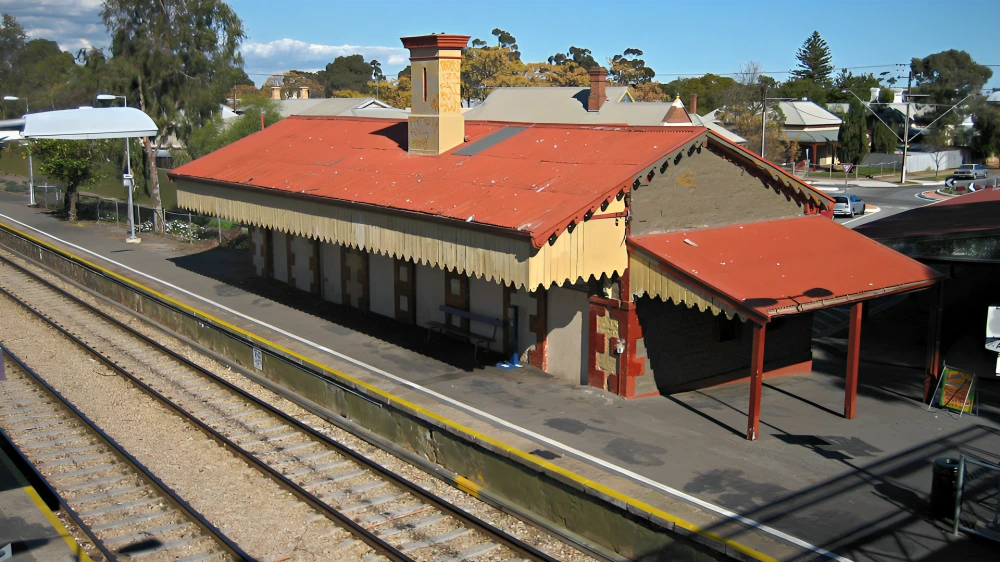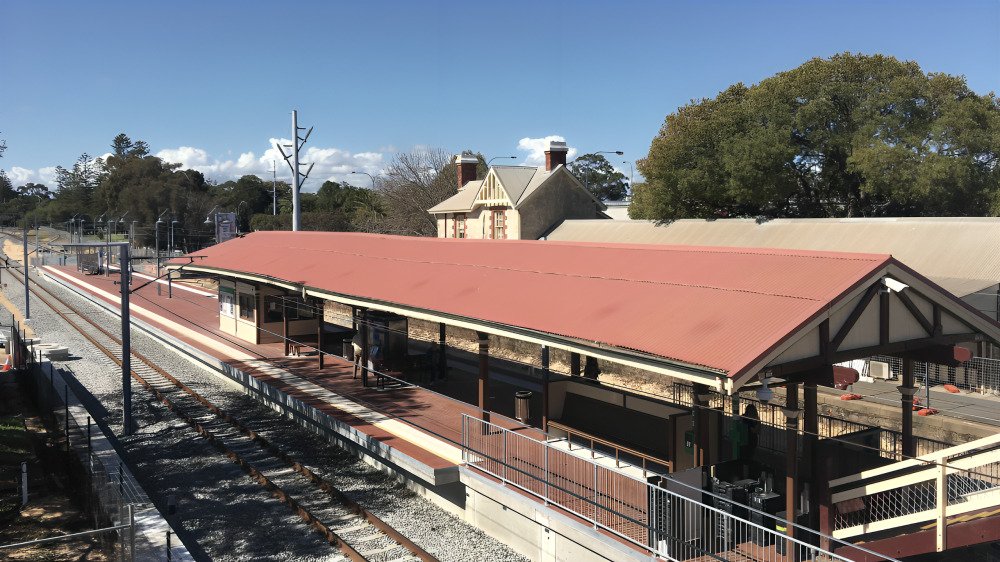Want to cruise Mumbai? Your main rail line is the Harbour Line. This major component of the local train system in Mumbai assists thousands of people traveling each day-joining central locations to Navi Mumbai and beyond. Whether you are a student, a working professional, or a regular commuter, understanding this line makes your journey smoother. It forms a vital connection for people who live in the suburbs and work in South Mumbai or vice versa. With growing urban sprawl, its role becomes even more important. This guide will walk you through all the Harbour Line stations and their significance.
Understanding the Mumbai Harbour Line
The Harbour Line is one of the three major railway lines in the city. It splits into two branches at Wadala Road. One arm stretches to Goregaon, and the other to Panvel. This split ensures connectivity across a broad region, from the city’s heart to the outskirts. It also serves as a major connector to other lines—like the Central Line, Western Line, Trans-Harbour Line, and even Mono Rail. That’s why thousands rely on it every single day.
Unlike the Western Line, the Harbour Line trains are all classified as ‘slow’, meaning they halt at every station along the route. While this may seem slow, it’s a blessing for daily commuters who rely on station-wise access.
Essential Details at a Glance
| Feature | Details |
| Owner | Indian Railways (Central) |
| Coverage Area | Mumbai, Thane, Navi Mumbai |
| Terminals | CSMT, Panvel, Goregaon |
| Total Stations | 35 |
| Operational Since | 12 December 1910 |
| Total Route Length | 73.84 km |
The Harbour Line remains one of the oldest and most widely used rail lines in Mumbai today. The continued focus on modernization has made this line more efficient and comfortable.
Routes Covered Under Harbour Line
Harbour Line includes three major segments:
- CSMT to Wadala Road
- Wadala Road to Panvel
- Wadala Road to Goregaon via Andheri
Each route connects vital neighbourhoods and employment hubs. The full route covers critical points across Mumbai’s dense suburbs.
Commuters can rely on these segments to reach key hubs like Kurla, Chembur, Bandra, Vashi, and Panvel. The line also serves as a spine for Navi Mumbai’s transportation ecosystem.
Mapping the Harbour Line Network
The Harbour Line runs parallel to the Central Line initially and then branches out. After Wadala Road, the routes divide:
- One path goes to Goregaon (Western suburbs)
- The second leads to Panvel via Navi Mumbai
There’s even a further split near Navi Mumbai into Panvel and Thane directions. This division allows seamless movement across multiple zones without switching too many trains.
The network acts like a web that makes east-west travel less of a nightmare. It provides access to multiple railway stations that serve as transfer points across different regions.
Complete List of Harbour Line Stations
CSMT to Wadala Road
These stations form the first segment of the Harbour Line:
- CSMT
- Masjid
- Sandhurst Road
- Dockyard Road
- Reay Road
- Cotton Green
- Sewri
- Wadala Road
This stretch connects old South Mumbai to central locations. These stations are crucial for students, traders, and office workers commuting from the old city.
Wadala Road to Panvel
| Station | Connectivity |
| Wadala Road | Junction point |
| Guru Tegh Bahadur | – |
| Chunabhatti | – |
| Kurla | Central Line |
| Tilak Nagar | Indian Railways |
| Chembur | Mono Rail |
| Govandi | – |
| Mankhurd | – |
| Vashi | Trans-Harbour Line |
| Sanpada | Trans-Harbour Line |
| Juinagar | – |
| Nerul | Nerul-Uran, Trans-Harbour Line |
| Seawoods-Darave | Nerul-Uran, Trans-Harbour Line |
| CBD Belapur | Nerul-Uran, Trans-Harbour Line |
| Kharghar | Navi Mumbai Metro |
| Mansarovar | Trans-Harbour Line |
| Khandeshwar | Navi Mumbai Metro |
| Panvel | Central Line, Trans-Harbour Line |
This stretch supports offices, industrial zones, and residential townships. It’s highly important for IT professionals and students attending institutes in Navi Mumbai.
Wadala Road to Goregaon
- King’s Circle
- Mahim (Western Line)
- Bandra
- Khar Road
- Santacruz
- Vile Parle
- Andheri
- Jogeshwari
- Ram Mandir
- Goregaon
This part supports people working or living in the Western suburbs of Mumbai. This line makes it possible to bypass the crowd-heavy Western Line while still reaching key locations.
Where Can You Interchange Trains?
Harbour Line provides multiple interchanges:
- To Central Line: CSMT, Masjid, Kurla, Panvel
- To Western Line: Mahim, Bandra, Andheri, Goregaon
- To Mono Rail: Chembur, Wadala Road
- To Navi Mumbai Metro: Kharghar, Khandeshwar
- To Trans Harbour Line: Vashi, Nerul, Seawoods-Darave, Belapur
Multiple interchanges increase flexibility and cut down on total travel time. This makes the Harbour Line perfect for people who regularly travel long distances across the city.
Timings of Harbour Line Trains
Trains operate at high frequency. Here’s what you need to know:
- Start Time: 4:00 AM
- End Time: 1:00 AM
- Train Type: All slow, halt at every stop
- Peak Frequency: 3–5 minutes between trains
Because trains start early and run late into the night, even late-shift workers and early commuters can depend on this line.
What Does It Cost to Travel?
| Class | Fare (INR) | Monthly Pass (INR) |
| First Class | 50 – 165 | 345 – 1165 |
| Second Class | 5 – 20 | 100 – 615 |
First Class gives comfort; Second Class is budget-friendly. Monthly passes are a great option for daily travellers. The cost-effectiveness is a major reason why the line sees such high daily footfall.
New Extensions Coming Soon
Two big projects are shaping the future:
- Kurla to Shivajinagar (Pune) – via Panvel, Vashi, Karjat
- Goregaon to Borivali – already under construction since March 2024
These upgrades will improve regional connectivity and reduce pressure on road traffic. They are expected to cut down Mumbai-Pune travel time significantly. It also opens up new real estate possibilities along the route.
How It All Began?
The Harbour Line has a rich history. Here are key milestones:

- 1910: Reay Road to Kurla opened
- 1925: Connected to CSMT
- 1992: Reached Vashi
- 1993: Nerul and Belapur included
- 1998: Extended to Panvel
- 2002: Trans-Harbour Line connected Vashi to Thane
Each expansion made the line stronger and more useful for daily commuters. It continues to grow, keeping pace with Mumbai’s expansion.
Whom to Contact?
Need help or details? Call: 022 22621450
For urgent matters or ticket-related issues, use the Indian Railways Helpline: 138
They’re available to handle complaints, clarify train timings, or help with lost items.
Best Places to Live Nearby
Living near harbour line stations has perks—reduced travel time, better access. Here are top areas:
Chembur
- Residential and commercial mix
- Close to airport, BKC
- Property range: INR 1.8 – 5 Cr
Tilak Nagar
- Budget housing, schools, markets
- Close to Kurla, Thane
- Price range: INR 1 – 1.8 Cr
Wadala
- Well-connected, central zone
- Ideal for professionals
- Price range: INR 1 – 1.8 Cr
Other nearby localities: Govandi, Nerul, CBD Belapur, and Bandra East—all benefit from proximity to Harbour Line stations. These areas offer everything from high-end apartments to affordable flats.
Conclusion: Harbour Line Mumbai
The Harbour Line is more than just a train route. It’s a lifeline for millions. From CSMT to Panvel and Goregaon, it connects homes, jobs, schools, and cities. Daily travel becomes affordable and smooth. With future expansions on the way, harbour line stations will grow even more vital. If you live in Mumbai—or plan to—keeping close to the Harbour Line makes perfect sense. With frequent trains, smart interchanges, and growing infrastructure, the Harbour Line ensures that the city never stops moving.
So next time you think about daily travel, property investment, or just exploring Mumbai—remember the Harbour Line. It’s fast, it’s reliable, and it’s made for the city’s people.
Read Our More Blogs:- How to Find Survey Number of Land in India: Simple Guide for Owners & Buyers
